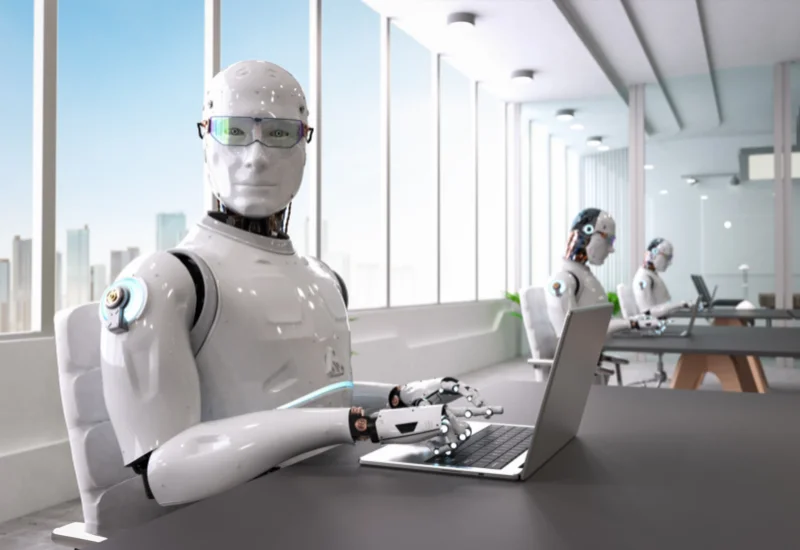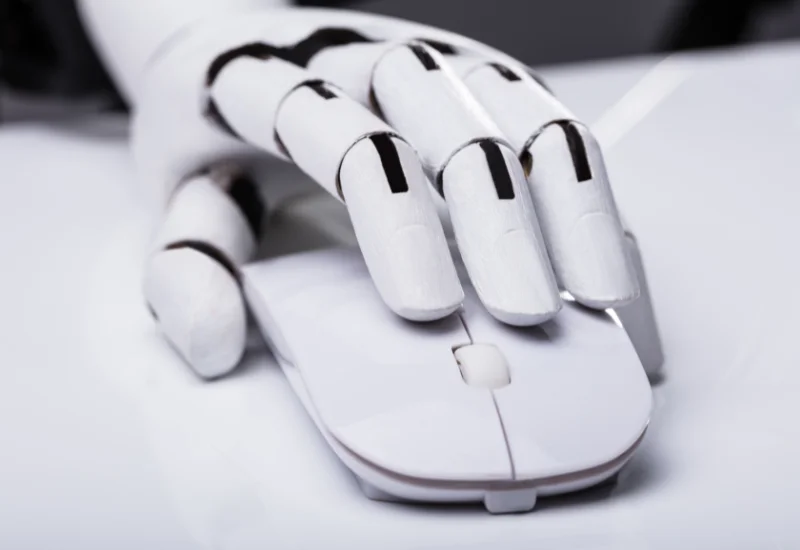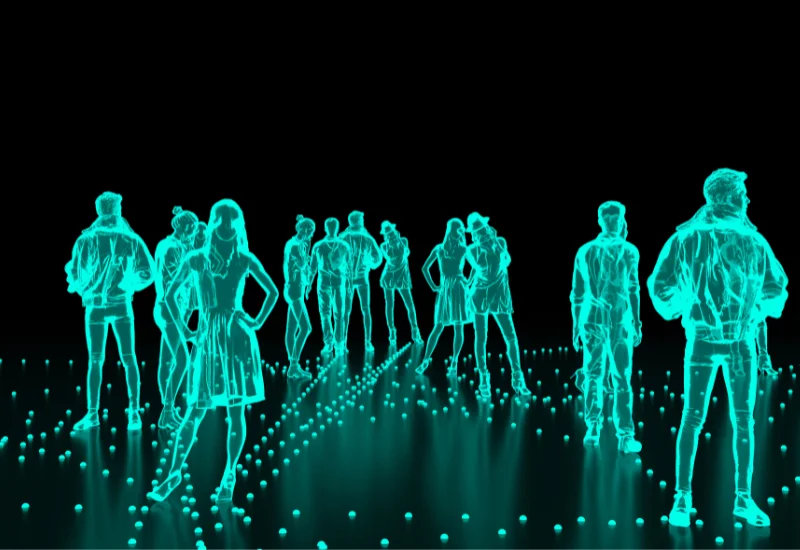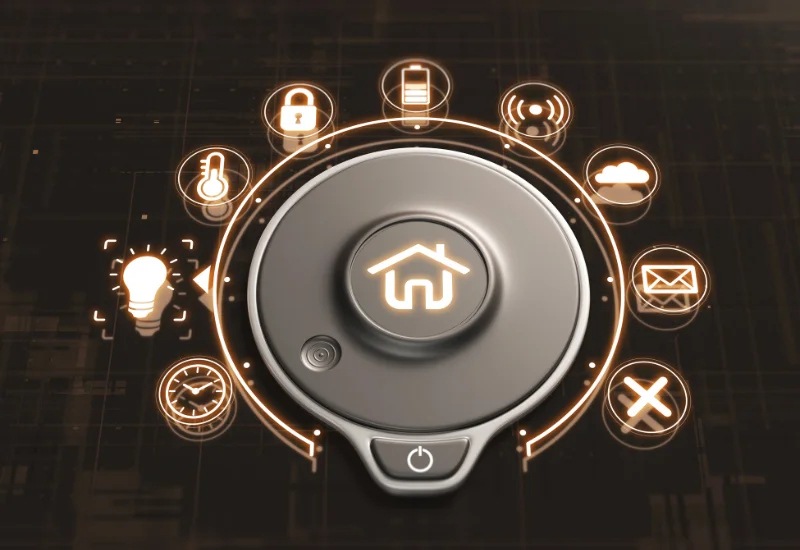
Jun 03, 2025
Written by Pieter-Jan - Written: December 14, 2022

The corona pandemic has sparked a revolution, and not just on the health front. Our expectations concerning work and the workplace have changed drastically. And that shows in the office.
Goodbye, cubicles and ping pong tables: ten years from now our offices will look completely different. How are we going to work together in the future? Is hybrid work here to stay? Will robots take our jobs? And which role will there be for holograms? While you can never be sure what lies ahead, you can prepare your organization for the future.
Workplaces will undergo changes in several areas over the next decade:
COVID-19 marked a turning point for office culture. Things already started to change in previous years, but the pandemic accelerated the revolution. There is no turning back now: workplace changes will continue in the coming years. Here’s what to expect:
In 2015, years before the world first learned about COVID-19, Fast Company asked architecture firm Perkins+Will how they saw office buildings evolving by 2025. The prophetic words of senior interior designer Hakee Chang: “If technology is exponentially expanding, it will be omnipresent… We could work everywhere and anywhere. Perhaps the office could be the place where people would want to gather – a destination to reconnect with your fellow employees, collaborators, and other folks.”
If the pandemic has taught us one thing, it is indeed that it is possible to do our jobs anywhere. While companies worldwide were forced to keep their doors shut, billions of workers were working from their homes. At the kitchen table or in their sofa, in some cases with screaming children in the background, in pyjamas or with the cat on their lap. But the work got done, and most importantly - though this was a surprise to many business leaders - productivity remained just as high.
Some statistics:
· 32 percent of employees never want to return to the office full-time
· 74 percent of employees have more energy and focus at home than in the office
· 36 percent of workers are considering a new job because the pandemic changed their desires and expectations
Source: Korn Ferry
What did change is that the past few years taught the employee what he wants: a better work-life balance, more freedom and flexibility, more time for family, friends and hobbies, less commuting, working where and when he wants, and going to the office to meet colleagues.
This is exactly what the new role of the office will be. While the home office is the ideal place to accomplish individual tasks, the workplace is all about meaningful connections between people: meetings, brainstorming sessions, trainings, encounters with colleagues. It is also a place to take a break from the many Zoom meetings and the endless flow of emails, text messages and phone calls, to meet colleagues in real life and enjoy a cup of coffee together.
In most companies, some form of hybrid work - where worktime is split between the office and home - has already become the new normal. Now the workplace just needs to come along.

For starters, office space can be smaller, since not all employees will be in the office at the same time. More and more companies are moving away from individual desks and are introducing “hot desking” (where employees occupy any available chair) or “office hoteling” (where a workspace must be reserved). Lockers are being introduced to store personal belongings.
This creates more space for common areas. The office space of the future consists not only of meeting rooms - equipped with cameras, microphones and screens for hybrid meetings - but also relaxation areas, green spaces, and stress free zones.
According to the real estate industry, the office’s new role as a place for meaningful encounters also means a farewell to the so-called “fun offices” that are so popular in Silicon Valley. Tech giants such as Amazon and Google, as well as many start-ups, tended to build a work environment around the perception of fun. And so emerged ping pong tables, climbing walls, slides, gyms and even sleeping areas in the workplace.
But now awareness is growing that all these well-intended perks do not contribute to employee happiness at all, but instead just keep them at work longer. This is why companies are increasingly banishing their ping pong tables.
The Internet of Things is on the rise. Anyone who steps into a company building will immediately see the benefits. A smart office building is a workplace that combines various data-driven and digitally supported services to improve employee efficiency and experience, save costs and energy, and add value to the building.
The possibilities are endless and will only increase in years to come.
Smart Parking: employees and visitors can reserve a parking space in advance in an app. When they arrive, they gain access via license plate recognition.
Digital visitor registration: guests can easily check themselves in on a tablet. A message is automatically sent to their host.
Office hoteling: employees can reserve a workspace in an app or view occupancy rates.
Smart climate control: using sensors that collect real-time information about the occupancy of your office spaces, heating and air conditioning are automatically controlled.
Smart lighting: lights are automatically turned off when no one is in the room. This means huge energy savings.
Smart printers: printer ink is automatically ordered when it is running low.
Digital assistants: in the home environment, smart assistants such as Siri and Alexa are already well established. As these technologies continue to improve, we have every reason to expect a similar trend in the office.
Book meeting rooms: apps can provide recommendations for a meeting room that is most convenient, or schedule the meeting automatically.
Vizito offers a comprehensive system for visitor management that makes your reception smarter. A smart visitor registration system is the best way to make your reception more efficient and make a good impression on your visitors.
To find out how a visitor management system can help you improve your reception, you can try out Vizito during a 14-day trial. Chat with us or book a demo to discover all the benefits of Vizito.
193: that’s how many climate cases were filed against companies in 2021. Climate awareness is growing, and companies that don’t share this awareness may expect fierce protest. The best-known examples are U.S. oil giants ExxonMobil and Chevron, which have faced boycotts from their own shareholders and disgruntled investors for failing to present a strategy for a low-carbon future.
These figures are just a taste of what is yet to come. People no longer accept companies lacking concern for society or climate. And this view is also gaining ground in the corporate world itself. Employees want to pursue an objective other than profit. Customers require their suppliers to be conscious of climate and ethical business practices. Investors, partners, customers, employees: all are turning their backs on companies that are not committed to sustainability.

Fortunately, more and more companies are aware of their carbon footprint and are making plans to operate in a more climate-friendly manner. Hiring a sustainability officer, limiting travel, reducing paper and telecommuting are just a few measures companies can take.
In the future, it is expected that more and more office buildings will be carbon neutral by generating their own electricity. A good example is The Edge in Amsterdam, according to the British rating agency BREEAM the greenest building in the world. The building generates more electricity than it consumes using LED solar panels packed with sensors.
Do you want to know more about how you can reduce your company’s carbon footprint? Here are 8 ways businesses can help fight climate change.
When you say “workplace of the future” you immediately think of robots. No, machines won’t have taken over all of our jobs ten years from now. But they will play an important role in our everyday tasks. And that’s just as well.
So won’t some jobs become obsolete? Probably. But history has shown that the labor market always adapts to technological progress. Jobs that are lost are compensated for by the creation of new jobs.
More importantly, workers will be freed from monotonous, repetitive and numbing tasks, and will be able to focus on work that requires a human touch. They will be able to fully use their creativity, strategic and analytical insight and emotional intelligence, and that will lead to more meaningful and engaging jobs with more growth potential.

In the coming years, we expect an increase in investment in artificial intelligence (AI) in the workplace. The data generated by AI tools can lead to better decision-making and results. Some examples:
Doctors will be able to use AI to analyze medical records and imaging to make accurate diagnoses
Lawyers will be able to quickly review hundreds of court cases to find precedents
In an engineering work environment, AI will be able to be used to analyze processes and predict where failures may occur
The abundance of digital innovations offers a wealth of opportunities for the workplace. And that will be necessary if companies are to maintain social ties and collaboration among teammates as they increasingly telecommute. According to Buffer research, 24 percent of home workers sometimes feel lonely. 21 percent struggle to stay motivated, and 17 percent experience difficulties with collaboration and communication.
The typical Zoom calls and Slack channels don’t suffize to address that problem. A real gamechanger is needed to bridge the gap between employees in the office and at home.
According to some, this issue will mean the definitive breakthrough of holograms. Holograms are projections of 3D digital images. They have long been used in show business, but there are possibilities in the workplace as well.
Several tech companies, including Microsoft and Google, are in a race to develop a suitable system for the workplace. Employees who telecommute could then project themselves into the office or conference room. Because even your facial expressions and other nonverbal communications would be visible, it would appear as if you were effectively present in the room.

Others believe more in the metaverse to create a virtual world where employees, wherever they are, can meet and collaborate. The most famous - but by no means the only - wayfarer is Meta, Facebook’s parent company, which sees the metaverse as the successor to the current Internet.
Some terms explained:
VR (virtual reality): a virtual environment is simulated via a computer, visually and auditory different from reality. The user can explore that virtual world using a headset and haptics.
AR (augmented reality): using technology systems, information is added to the real world. For example: information about a business is written on the road, or the name of a person is visible when you pass them.
MR (mixed reality): using technologies such as motion sensors, body tracking and eye tracking, sounds or graphics are added real-time to an experience. For example: a 3D animation that seems to be walking on your table.
XR (cross reality): an blanket term for emerging technologies such as VR, AR and MR.
A lot of XR tools are already out there, and major steps have been made in recent years. In some industries, such as entertainment, defense and industrial training, these technologies are already ubiquitous. Doctors, pilots and surgeons use VR and AR headsets to train. And recently Meta launched a tool for companies to attend meetings in VR: Horizon Workrooms.
In the future, XR is expected to be used prominently in offices and workplaces worldwide. Thanks to the leading role of the entertainment industry costs are being pushed down. Low-budget HMDs (head mounted displays), such as Samsung Gear VR and Google Cardboard, enable everyone to experience immersive virtual worlds. Nothing seems to be in the way of widespread use at work and at home.
So it seems that in the future, we will:
![]()
A 3D printed office building may sound like something straight out of a science fiction story. Yet it is not. In fact, it’s already happening.
In 2016, the world’s first 3D printed office building opened in Dubai. It took 17 days to print the concrete building, layer by layer, and 48 hours to build it. Cost: $140,000.
Chances are slim that we’ll all be working in 3D printed buildings 10 years from now. Still, this could be the beginning of a revolution in the way offices - and other buildings - are designed. 3D printing is clearly on the rise, and the technology is quietly making its appearance in the construction industry. Just look at MX3D’s 3D printed bridge in Amsterdam.
3D printing also provides opportunities for employees to print or customize office materials - in the office or at the home workplace - to suit their own specific needs.
There is no turning back: the office building of the future is hybrid, green, and packed with technology. Here’s how to prepare for it:
Embrace the hybrid model. Whether you like it or not, the future is hybrid. Think of the benefits it will bring, not only to your employees, but also to you.
Reassess your needs. And by your needs, we mean: your employee’s needs. If you want to keep your workforce happy and motivated, a return to the old work culture is not an option. Workplaces of the future focus on a positive work environment and a good office experience: training opportunities, diversity, health and safety policies, employee benefits such as parental leave, child care, health insurance…
Reconstruct how work happens. What tasks require physical presence? Which stages of a project are performed in the office, and which ones at home?
Create a futureproof office. Cubicles and rows of desks give way to areas for collaboration, meeting rooms with video screens and green spaces. Involve your employees in the process. For example, put up trial setups in part of the office space and ask for feedback from your staff.

Think about technologies that save you time, money and energy. Sensors for smart lights, smart climate control and digital visitor registration are just a few examples.
Recruit the right talent. A new way of working, means employees must develop new skills to meet expectations. Training and retraining are becoming increasingly important. According to the World Economic Forum (WEF), these are the skills that will gain importance in the next decade:
This is a quick guide to get you on your way to an office culture which centers work experience. The office building of the future focuses on hybrid work, sustainability, technology and automation, flexibility and an approach that revolves around people as individuals. Are you ready for the future?
To get an idea of how digital visitor registration can help your business grow, you can try out Vizito during a 14-day trial. Chat with us or request a demo to find out how Vizito can help you improve your reception.
Got more questions? These are the most common questions about digital visitor management - and our answers.